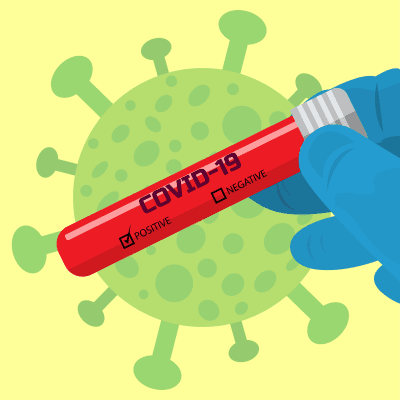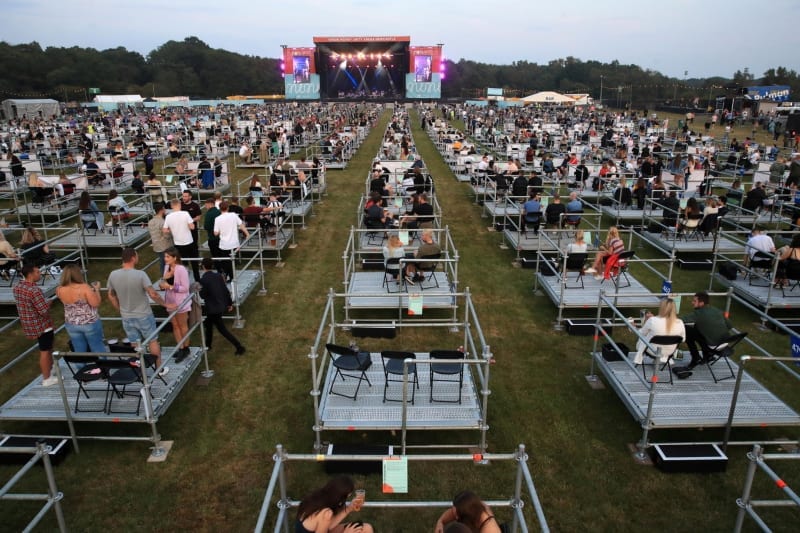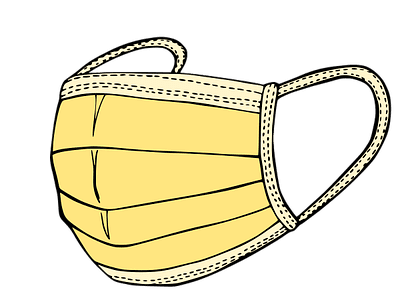In the wake of the global pandemic, new ideas have been put forward to make gatherings and events safer, so that they can proceed while providing a high level of safety for both guests and staff. But how effective are they? The Planner explores which of these can benefit the SA MICE events sector.
Pass the test, to pass through the door
The idea of rapid testing on arrival at an event, and daily for multi-day events, was proposed early on in the pandemic as an ideal tool to prevent infected individuals from attending an event and therefore minimise the risk of COVID-19 transmissions at an event.
While mask wearing and social distancing are also effective at reducing transmissions, they require compliance. The risk remains that people will forget or simply be lax about consistently following the rules. A quick test is far easier to enforce.

But there is a but… The World Health Organisation (WHO) explains that Rapid diagnostic tests (RDT), which yield results within 30 minutes or less, work by identifying antigens released by the virus. However these antigens are “expressed only when the virus is actively replicating; therefore, such tests are best used to identify acute or early infection”. It adds, “Half or more of COVID-19 infected patients might be missed by such tests.”
“Half or more of COVID-19 infected patients might be missed by such tests.”
Carlos-Henri Ferré of E25Bio, a company that is developing an inexpensive RDT that can be self-administered, says in an interview with the Event Manager Blog, “People mention the sensitivity of antigen tests all the time, and that they’re less sensitive. However, it’s really important to note that an antigen test is highly sensitive when it comes in contact with high viral loads — meaning people that are more likely to be super spreaders and transmit the disease.”
This may well be true, but it also means RDTs are similar to screening for COVID-19 symptoms. It’s another line of defence but it’s not a perfect one. If someone doesn’t have symptoms, it doesn’t mean that they are not infected and could infect others. Equally, the WHO warns that RDTs can have false positives – much as if someone has a common cold and is then be refused entry to an event.
Ultimately, this means the tests can have a place at events, but they need to be understood and used with all other existing health and safety precautions.
Stay in your bubble
A few out-of-the-box ideas have emerged to promote social distancing and limit contact between people at events – such as the German café that asked patrons to wear pool noodle hats. Other ideas that have caught on a little more in popularity include using pods and bubbles for diners, or viewing platforms for festival goers, to keep people in their ‘bubbles’.
Transparent plastic domes and igloos have been used by Chicago and New York restaurants in their outdoor seating areas. The idea is that groups of friends can book a ‘pod’ and enjoy the peace-of-mind that they have a physical line of defence should other diners be infected with the novel coronavirus.
Of course, the big questions is: Does it work? In some ways, yes, as it will be far harder for the droplets of an infected patron who sneezes, coughs or laughs in their pod to be carried into a neighbouring pod. However, as an article by Forbes points out, waiters moving between pods to serve patrons will frequently re-introduce the risk of the virus being transmitted between pods. And of course, if one of your dining companions happens to be infected, your risk of infection from them will increase from being cocooned together in this way and without good ventilation to disperse any droplets of the virus.
If one of your dining companions happens to be infected, your risk of infection from them will increase from being cocooned together in this way.
In this regard, the festival viewing platforms are a more effective strategy to prevent COVID-19 transmissions, as they are set-up outdoors and in the open air. The idea was first trialled in the UK, at the Virgin Money Unity Arena pop-up event in Newcastle upon Tyne (see the image below). Each platform could hold up to five people and was placed 2 meters apart. Other strategies to help attendees keep their distance included one-way pathways to the toilets, and online orders for food and drinks which were then delivered to the platforms. The event was reported to have had a high rate of social distancing compliance.

Locally Whipped Productions (LW Mag) is bringing this concept to South Africa, with A New Day Out Pod Party music festival which will be held at Montecasino at the end of the month.
While people generally attend business events to network and mingle, the concept of grouping people into ‘bubbles’ could carry merit. This could work by matching attendees by interest and assigning them to small groups to sit together and network during the refreshment breaks. This could possibly facilitate networking. However, it would likely only work best at events where networking isn’t the key focus – such as educational sessions and seminars – as otherwise it could frustrate attendees.
The other takeaway is to consider hosting events, or parts of them such as the refreshment breaks, outdoors. This is not only a safer space to be in, but it also gets your attendees outside and (hopefully) into the sunshine and fresh air which is great for their wellbeing too.
Piling on the PPE
Another common strategy to prevent COVID-19 transmissions is to up your Person Protective equipment (PPE). However, more isn’t necessarily better.

Did you know that wearing face shields and gloves in non-medical settings is not recommended by the WHO? Instead, good hand hygiene and cloth face masks are preferred.
While gloves protect your hands from the outside world, they can still transmit the COVID-19 virus to different surfaces. This means they require diligence when used, and to be removed properly to prevent possible contamination. Regular hand washing with soap and warm water for 20 seconds is the preferred route to go. When this isn’t possible, using an alcohol-based hand sanitiser that contains at least 60% alcohol is recommended. (There are exceptions to this rule, such as health care workers, those who are cleaning and disinfecting surfaces, and those who are handling items that have been used by someone who has the virus. In these instances, wearing gloves is recommended while following specific use guidelines.)
As for face shields, they do not create a seal around the mouth and nose, which means respiratory droplets carrying COVID-19 have an escape route – as well as a way in. Cloth face masks, on the other hand, tend to provide far more effective coverage if worn correctly. This means they need to cover both the mouth and nose snuggly.




